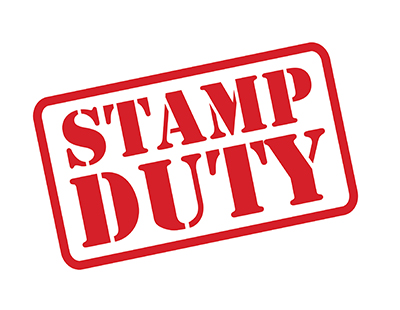As we slide into Christmas, with the busiest levels of house buying since 2006 and activity still buoyant, I don’t think anyone would argue with me when I say it’s been a good year for the property industry. The Stamp Duty holiday has no doubt played a significant role, catalysing a market that was coming out of the cold last summer, as well as a surge of pent-up demand in general that pushed a backlog of activity to the front of the line.
Despite some negative projections, a COVID-era (and that’s the last time I’ll mention the C-word) sales slump didn’t come to pass, and although we can’t know what the future might bring, it’s fair to say that the year past could have been much worse. But, before we start to settle into what will hopefully be a grand and well-deserved Christmas break, I would like to take a look back at the impact of the Stamp Duty holiday, and what should happen next for the Scrooge of house buyers.
Boom and growth
It’s fair to say that activity and house price growth were the headlines of 2021, catalysed unequivocally by the Stamp Duty holiday launched in June last year and buoyed by the unfortunate supply deficiencies keeping stock low and prices high. The mad rush to complete by the end of June this year climaxed a year of frenetic activity which arguably had some mixed results overall.
According to research from LSE on the Lessons from the stamp duty holiday, an additional 100,000 transactions were estimated to have been completed in the final few months of the initial holiday period as a direct result of the levy removal.
Commenting on the report Mark Bogard, CEO of the Family Building Society said: "The stamp duty holiday has been a very elegantly crafted experiment, resulting in a 50 per cent increase in transactions, leading to a better use of the housing stock, as well as supporting the Government's levelling up agenda.”
Now, this is a positive outlook albeit one laden with caveats. Yes, the Stamp Duty holiday was certainly good on paper for transactions, and of course for many house buyers – with savings of up to a maximum of £15,000. Perhaps more so, however, the associated economic activity was the real boon, with a total induced expenditure ranging from £1.8-£2.7 billion (along with multiplier effects) all feeding into the wider economy.
With all that said, there’s a dark side to this economic tale and it won’t have escaped anyone that this twist is the significant rise in house prices over the past year. According to the latest figures from the ONS (at the time of writing anyway), average house prices in the UK were up 11.8% over the year to September 2021, putting average prices £28,000 higher than in September of last year. No small sum, and for first-time buyers, in particular, trying to raise a deposit that’s a considerably higher hurdle to jump to reach the bottom rung.
The conversation around the SDLT has become increasingly poignant this year, with arguments on both sides over whether the levy should be reduced or abolished entirely. Many agents have certainly been calling for it to be at the very least reformed in some way, and this extends to consumers as well: the LSE report aforementioned above found in its survey for the Family Building Society that the majority of respondents were in favour of extending the holiday permanently, with the main reasons being that 1) it puts money in the economy (62%), 2) it encourages mobility (53%), it encourages rightsizing (53%), and that it simplifies the process of moving (44%).
An argument for abolishing Stamp Duty, or at least maintaining the nil rate at £500,000, is that it could help to reduce distortions in the housing and labour markets. That said, statistics suggest that transactions were already increasing well before the holiday could have had any impact, and that the holiday at least helped the market to match pre-pandemic levels.
Certainly, it’s fair to say that Stamp Duty is considered a ‘bad tax’, taxes in general always being unpopular but this one often stings more than it supports. On the flip side, given that house price increases outweighed the maximum potential Stamp Duty savings over the past year, it’s could also be argued that the holiday did more harm than good.
2022: a time for reform?
As we move forwards into the new year there are certainly new challenges that await for its various stakeholders – from professionals to the buyers and sellers. House price growth is expected to cool in the coming months, perhaps a welcome sight for buyers agonising over the consistent rise in house prices. But this will be tempered by the underwhelming supply of new stock to the market, as well as deficiencies in the house building industry that make a mockery of the government’s ‘levelling up’ agenda.
Adjacent to all of this is the increasing negative concern over the general view of unaffordability within the housing market, with house price growth exceeding average wage growth to the extent that it’s becoming increasingly difficult for first-time buyers to save for a deposit. Perhaps then another Stamp Duty holiday will be mooted in future as a means of jumpstarting the market in times of trouble, but I find it unlikely that such a holiday again will ever be a permanent fixture; it generates too much tax revenue and its influence on house prices bears repeating.
However, reforming the SDLT is a stronger argument, and a missed opportunity in October’s Budget given its impact. The Ghost of Christmas Present, the Bank of England, has also just tightened the belt by raising interest rates to 0.25%, and mortgage lenders may soon become the Ghost of Christmas Past once more and follow suit. Reducing the tax burden on the buyer and especially giving a boost to first-time buyers will help a new generation get on the ladder and support growth in the market.
Though much like the rush to buy presents at Christmas, supply must meet demand, and the government’s housebuilding agenda (and housebuilders) must be given a kick as part of wider reform to stabilise the market in 2022.
*Mark Armstrong is the Group Chief Executive Officer at Reapit













.jpg)
.jpg)






.png)



Join the conversation
Jump to latest comment and add your reply
Stamp duty is the reason my house isn’t on the market, as is the case with many of my friends and colleagues.
Simply put, I cannot justify adding 25-30k on top of a purchase price of a property I wish to buy.
It’s ridiculous and an unfair tax.
House prices have gone up, surely the government are making even more money off the back of sdlt than ever before.
I know many people who would market their houses if the stamp duty on their next purchase wasn’t so steep.
Reduce the amount of stamp duty up to £500000 and watch homes flood on to the market. It’s not rocket science surely?
This government are making this country not a very nice or easy country to want to live in!!!
Please login to comment